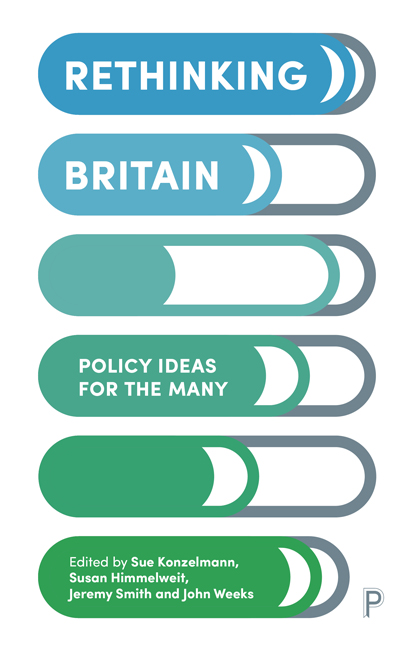Book contents
- Frontmatter
- Contents
- List of Tables and Figures
- The Contributors
- Foreword
- Introduction
- Interlude: ‘Mirror, Mirror, On the Wall – Who has the Highest Debt of All?’
- Part One Building a Full-Employment Economy: Introduction
- Part Two Public Investment – Prioritising Society Rather than Profit: Introduction
- Part Three Making Finance Work for Society: Introduction
- Part Four Genuine Social Security: Introduction
- Part Five How to provide for Social Needs: Introduction
- Conclusion
- Jargon Busters
- References and Further Reading
- Index
Part Three - Making Finance Work for Society: Introduction
Published online by Cambridge University Press: 11 March 2021
- Frontmatter
- Contents
- List of Tables and Figures
- The Contributors
- Foreword
- Introduction
- Interlude: ‘Mirror, Mirror, On the Wall – Who has the Highest Debt of All?’
- Part One Building a Full-Employment Economy: Introduction
- Part Two Public Investment – Prioritising Society Rather than Profit: Introduction
- Part Three Making Finance Work for Society: Introduction
- Part Four Genuine Social Security: Introduction
- Part Five How to provide for Social Needs: Introduction
- Conclusion
- Jargon Busters
- References and Further Reading
- Index
Summary
There are probably few people in Europe, let alone the UK, who aren't fed up with the fall-out from the 2008 financial crisis, the misery of recession and the austerity that's followed the crisis. However, if one of the aims of future policy is to reduce the number – not to mention the size – of these destructive busts, it's essential to understand what drives them.
Not enough people today remember, that for about three and a half decades following the Second World War there were virtually no financial crises; this was also a period when government policies were aimed at full employment and stable prices. The result was steadily falling public debt, rapidly rising living standards and improvements in income and wealth equality, leading some to call it the ‘golden age’ of capitalism.
That's odd, because since the 1970s living standards for the majority have stagnated, inequality has risen sharply and a major financial crash has come along about every decade – and, yes, that does suggest that the next one might not be too far off. So why was finance once so stable? And what caused the return of financial crises?
Like today, after the Great Depression and Second World War, many countries had also had quite enough of tough economic and social times. Financial crises – of which the 1929 Wall Street Crash that triggered the Great Depression was then merely the latest – had been a feature of capitalism since the Industrial Revolution, and many thought that they were an unavoidable part of capitalism.
However, the new post-war ‘Bretton Woods’ system of international financial regulation, together with tightly regulated domestic financial systems, resulted in 30 years without a crisis, where previous experience would have predicted at least three (and probably four) during that time. National financial systems and institutions were tightly regulated, the supply of credit was limited, and international capital flows were restricted. Major currencies were pegged to the US dollar, which itself was backed by gold – so exchange rates were essentially fixed. This both limited the funds available to inflate housing and stock market bubbles, and drastically reduced opportunities for currency speculation. The result was an international system that regulated both trade and – crucially – finance.
- Type
- Chapter
- Information
- Rethinking BritainPolicy Ideas for the Many, pp. 99 - 103Publisher: Bristol University PressPrint publication year: 2019



